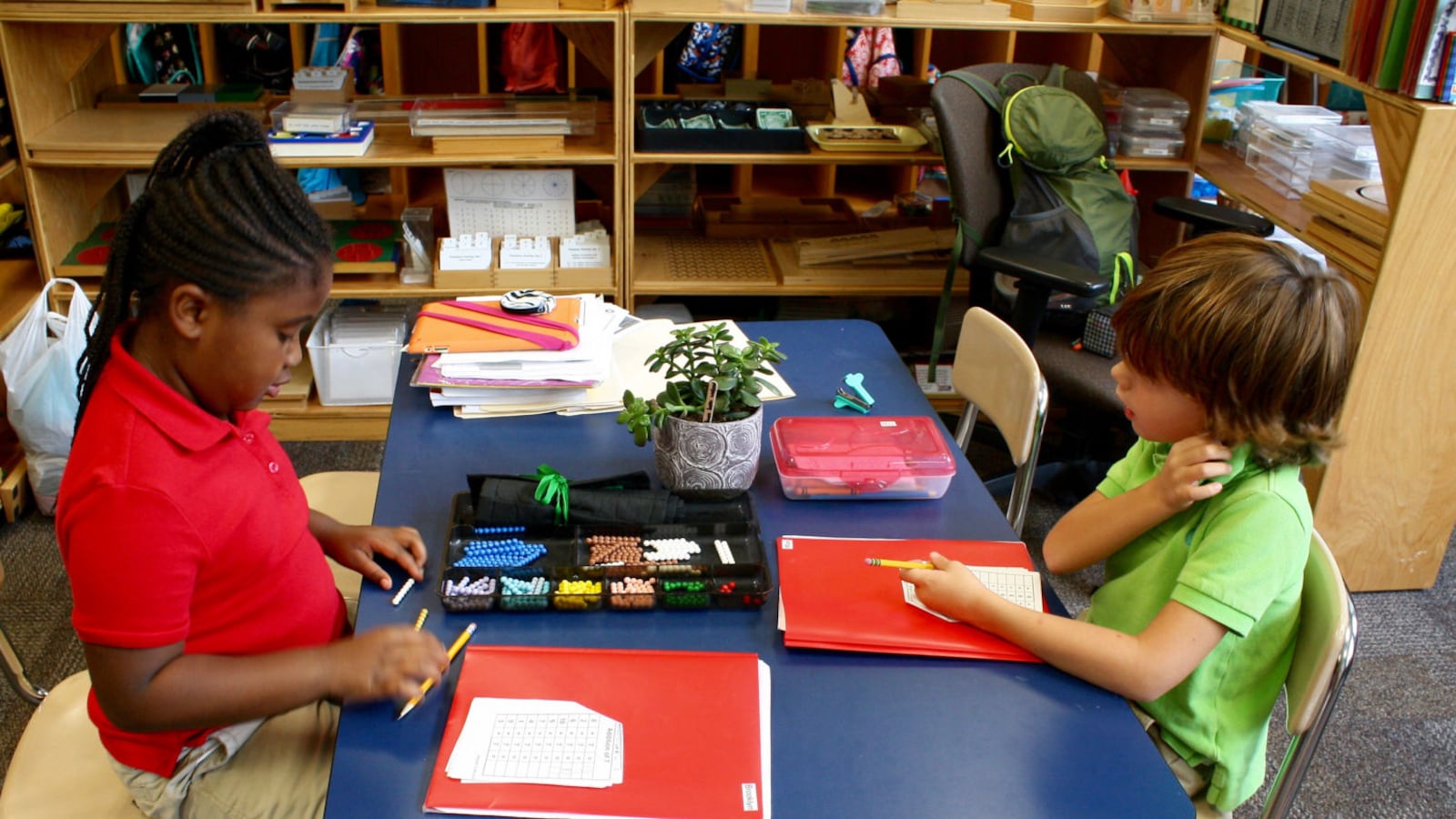Indianapolis Public Schools leaders recently overhauled school budgets in a bid to give more money to schools with poor students. At the same time, they quietly sent more than $6.5 million extra to 17 schools — including the district’s most affluent campuses.
That money went to special programs that often attract middle-class families in the form of about $700 extra on average per student, according to a Chalkbeat analysis. That’s substantially more than the $500 bonus the district gives to schools for each student in poverty.
Those dollars are significant in a district strapped for cash: Spread out evenly, the $6.5 million could send all schools about $250 more per student.
The bonuses also highlight a challenge district leaders often face when trying to make school funding fairer: not alienating families at schools that have long received different resources — and who might otherwise choose private schools or the suburbs.
Critics say the bonuses could work against the district’s goal of directing more resources to schools that need the most help.
“If you put more money into higher-achieving schools, your budget strategy, whether you will say it out loud or not, is to expand the achievement gap,” said Marguerite Roza, a Georgetown University professor who studies school finance.
District leaders defend the extra money as essential for special programs — which have focus areas such as Montessori, the arts, or career and technical education — because they cost more to run and would be harmed if they lost funding.
“We did not want to adversely impact the operations of those programs,” Superintendent Lewis Ferebee said.
But giving schools funding based on their programs is one thing that IPS’s new budget system was supposed to prevent. Until this year, the district awarded funds to schools based on an assortment of reasons, including the programs schools offer. In theory, the new student-based budgeting process, on the other hand, is supposed to funnel money to schools based on the needs of individual students.
Read: IPS’ new budget plan is supposed to give more money to poor schools. Here’s how it works.
The district designed some extra money to be temporary under the new budget plan so that schools wouldn’t experience a sudden drop in funding. But officials have not said whether the bonuses to special programs will lessen or disappear over time.
The 17 schools receiving extra money run the gamut. Their demographics vary, and some of the schools are low-performing. But on average, the passing rates on state tests are significantly higher than district averages, while the average poverty rate is far lower — 58 percent versus 78 percent. The amount of money they receive also varies widely.
(Click here to see Chalkbeat’s full analysis, which combined choice programs that do not receive extra money with the district’s other campuses. The projected poverty rate provided by the district does not include students in prekindergarten or self-contained special education classrooms, though those students are included in the total enrollment.)
Unlike neighborhood schools, families choose them, and the vast majority accept students by lottery.
Ferebee said he does not see spending more on choice programs as taking money away from other schools. He noted that the district also gives extra money to schools that have historically struggled. Several schools in a district-led turnaround effort called a transformation zone, for example, also get extra funding.
Plus, all families in the district have access to choice programs, he added.
“I would be more concerned if we didn’t open those programs up to all students, and didn’t provide transportation to all students,” Ferebee said. “But we do.”
The district has also worked to make sure less affluent families have access to choice programs. Last fall, the IPS board reduced the number of families who get priority because they live near a school and reserved seats for families who apply later in the year because data showed low-income families were more likely to apply late.
But for now, many of the schools that get extra money for choice programs are far more likely to educate middle-class students.
That’s likely a reflection of a key challenge for IPS and other urban districts. In states like Indiana, where schools get more money for each student they enroll, winning over parents is essential to staying financially viable. But the kind of programming — such as Montessori and International Baccalaureate schools — that can attract families who might choose private schools or move to the suburbs can be expensive because it often requires extra staff or training.
Carrie Stewart, cofounder of Afton Partners, which consults with districts on financial strategies. She said it is common for districts to give extra funding to schools with special programs.
Schools that offer the IB program, for example, must meet strict staffing and training requirements. “It’s very hard to run them at the same price tag as a typical school,” she said, which means they need more funding.
“Is that fair? I mean, I don’t know,” she added. But if the district doesn’t offer the programs at all, it could lose families to private schools, Stewart said. “Then everybody loses because the district will lose money.”

